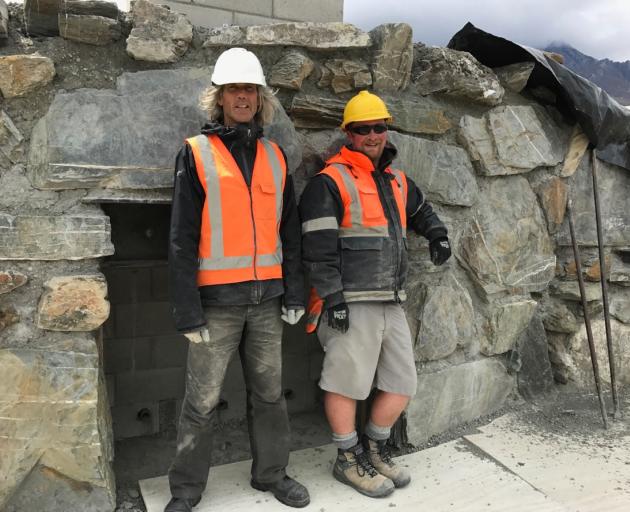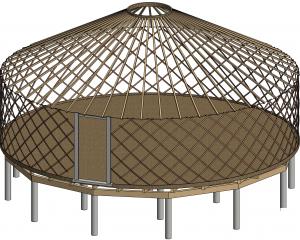
Designer, sculptor and avalanche specialist Dan Kelly has been constructing the Scheelite Campfire Shelter and Cookhouse by hand.
Mr Kelly is using large ancient stones, recycled timber and the remnants of an old scheelite mining trolley and railway track for the project which, on completion, will comprise a 26m-long, 5.5m-high stone fireplace and a mobile brazier barbecue made from the mining trolley.
A kinetic water sculpture, inspired by the old water-driven scheelite ore battery stamper once positioned at Glenorchy Batter on Mt Judah, will be built into the shelter to collect rainwater, with additional overflow directed to the nearby wetland.
Mr Kelly said stone ruins could often be found around the district and what was always left standing was the fireplace, which was the "heart and soul of the house".
"It was where you cooked and where you lived in winter.
"We want to create an outdoor fireplace that is built from giant local rocks and weaves in details from our local heritage and landscape."
Camp Glenorchy, founded by Paul and Debbi Brainerd, will be New Zealand’s first Net Zero Energy campground.
Mrs Brainerd said the shelter was a "wonderful" example of how having a talented local artist like Mr Kelly could pay dividends.
"Dan can combine extraordinary natural beauty with cultural and historical details that will make the campfire shelter the jewel of Camp Glenorchy.
"It will be a beautiful juxtaposition to the more traditional-looking energy-efficient buildings adjacent to the structure."











